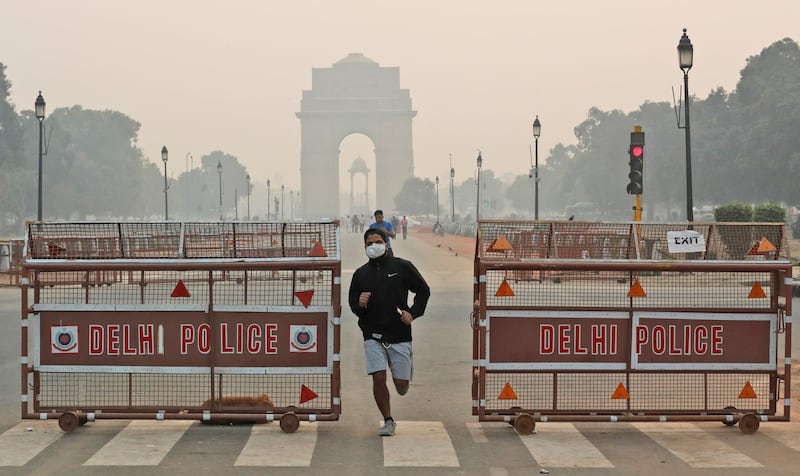A deadly haze hung over New Delhi on Monday as smoke from firecrackers lit by Diwali revellers added to the Indian capital's air pollution.
Landmarks such as the capital's Red Fort and India Gate were shrouded in smog and visibility on the roads was poor the morning after celebrations of India's biggest Hindu festival.
Revellers ignored a Supreme Court ban on most fireworks, setting off firecrackers and rockets that sent clouds of smoke wafting above what is already the world's most polluted capital.
The court had ordered residents to only use safe and environmentally friendly fireworks for a maximum of two hours, and only in designated areas such as parks, but the law was violated in several parts of the city, residents said.
The air quality index, which measures the concentration of poisonous particulate matter, touched 500 in several parts of Delhi, including the international airport, in the early hours of Monday, the maximum recorded by the government's Central Pollution Control Board.
While the pollution was less serious than in previous years, the amount of the most harmful PM 2.5 pollutants was still more than 20 times international safe levels at several locations in the city of 20 million people during commuting hours. The particulate matter measures less than 2.5 microns and can penetrate the lungs through the blood system, causing serious respiratory and heart diseases.
Experts say the toxic cocktail that hits Delhi and other Indian cities each winter causes the premature deaths of more than one million people each year.
Weather officials said moderate winds would help clean the city's air but that increased fires on farms in the neighbouring Haryana and Punjab states was a particular threat. Thousands of farmers burn their rice and wheat stubble at this time each year before planting new crops, sending clouds of smoke toward Delhi.
Experts say this contributes a fifth of the PM2.5 pollution that hits each year, while the millions of vehicles on the roads and unregulated construction and factory emissions are the major cause.
The government has taken a series of anti-pollution measures in recent years, including shutting down thermal power plants and banning construction during the peak pollution season. In a bid to reduce traffic, a system of allowing vehicles with odd and even registration plates on the roads on alternate days will go into effect in November.







